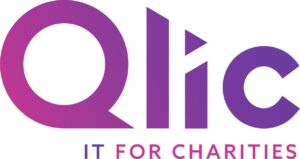
As the charity sector becomes progressively reliant on digital platforms and technology to manage daily operations, like storing sensitive donor data and delivering services, cybersecurity has become something nonprofits can’t compromise anymore. According to recent cybersecurity trends and statistics, there was a 30% year-over-year increase in weekly cyberattacks targeting nonprofits in 2024. These attacks are becoming more common and sophisticated, posing serious threats to the financial and reputational stability of charitable organisations.
From phishing campaigns to ransomware, cyber criminals often exploit limited IT resources within nonprofit organisations. This is why all nonprofits, regardless of size or mission, should consider having cyber insurance as part of their risk management strategy.
With the global average cost of a data breach hitting USD 4.88 million in 2024, a 10% increase over the previous year and the highest recorded to date, the financial toll of an incident could harshly undermine a nonprofit’s ability to fulfil its mission.
This blog will explain the importance of cyber insurance for charities, what coverage to look for, how it fits within a broader cybersecurity strategy, and how Qlic’s sector-specific expertise can help you make the right choices for your organisation’s digital resilience.
Decoding Cyber Insurance Coverage for Nonprofits
Cyber and data insurance policies offer more than just peace of mind, they are a vital element of any modern charity’s risk management strategy. Yet, many nonprofits have questions about what cyber insurance covers and whether it’s worth the investment. Understanding these details can help make informed decisions that protect your business and the people you serve.
What is Cyber Insurance for Nonprofits and Why Does it Matter?
Cyber insurance is a dedicated form of coverage designed to protect organisations from internet-based threats. This includes a wide range of risks such as data breaches, ransomware incidents, social engineering attacks and phishing schemes, including targeted spear phishing attacks. For nonprofits, which often lack dedicated in-house cybersecurity resources and IT departments, this type of insurance provides a vital safety net in the event of a cyber incident.
As charities are becoming frequent targets for cyberattacks, cyber insurance is now a must-have, which allows them to respond quickly and recover effectively after an attack.
Why Do Charities Need Cyber Insurance?
Charities manage vast amounts of confidential information, from donor names, addresses, and financial details to beneficiary records that may include protected health information. This makes them a principal target for cybercriminals. Without proper protection, a single security breach could lead to great damage.
In addition to protecting sensitive data, cyber insurance helps charities:
- Avoid reputational damage that can erode public trust and donor confidence.
- Prevent disruption to operations, allowing essential services to continue even in the face of a cyberattack.
- Limit financial losses. The costs associated with cyber incidents can be damaging, covering everything from forensic investigations and legal fees to notification costs and system restoration. Unlike traditional business insurance, which often excludes electronic data from its definitions of tangible assets, cyber insurance fills this critical gap.
- Ensure compliance with regulations. Charities must demonstrate adherence to privacy laws such as the General Data Protection Regulation, which requires them to take sufficient measures to protect the personal data they hold.
- Resilience Against Growing Cyber Threats
With cyber threats evolving rapidly, being prepared is more important than ever. Having cyber insurance is considered a cybersecurity best practice for a holistic approach.
To put things in perspective, take a look at this statistic from Statista, which illustrates the rising number of data breaches and records exposed annually. The growing volume of compromised data underlines the pressing need for charities to implement both technical safeguards and strong insurance coverage.
What Does Cyber Liability Insurance for Nonprofits Cover?
Cyber insurance policies for nonprofits typically offer a suite of coverages designed to defend against a variety of digital risks. Here’s what most comprehensive policies include:
- Data Breach Response Coverage
- Liability Claims
- Business Interruption
- Regulatory Defence and Penalties
- Media Liability
- Cyber Extortion and Ransomware Payments
Data Breach Response Coverage
This coverage supports nonprofits in responding immediately and effectively to a data breach. It can cover the cost of forensic investigations, notifying affected individuals, offering credit monitoring services, and public relations efforts to manage reputational damage. Fast, coordinated response is fundamental to limit both the operational and reputational fallout of a breach.
Liability Claims
Cyber liability coverage safeguards nonprofits from the financial burden of legal claims made by individuals, donors, partners, or beneficiaries whose data was compromised. It typically includes legal defence costs, settlements, and court-ordered judgments in cases of privacy violations, unauthorised data disclosures, or cyber-related negligence.
Business Interruption
When a cyber incident stops your operations, business interruption coverage helps mitigate the financial impact. It can cover lost income, extra expenses to maintain operations, and costs to restore systems and data. For instance, a ransomware attack that locks your donor database or a DDoS attack that takes down your website could severely affect day-to-day work.
Regulatory Defense and Penalties
This coverage supports nonprofits in responding to regulatory investigations, fines, and penalties that may arise after a data breach. If your organisation stores personally identifiable information (PII) or protected health information (PHI), you’re subject to data protection laws such as GDPR or HIPAA. It shows you’re taking compliance seriously and helps protect you from legal problems.
Media Liability
Nonprofits often publish content on websites, blogs, and social media. Media liability coverage protects against claims of copyright infringement, libel, slander, and other content-related legal issues. It’s especially significant for charities involved in advocacy or awareness campaigns where online communications are frequent and public-facing.
Cyber Extortion and Ransomware Payments
Cyber extortion coverage helps your organisation respond to threats such as ransomware, where hackers encrypt critical data and demand payment to restore access. This insurance can cover the cost of negotiating with attackers, hiring cybersecurity experts, and, if necessary, paying the ransom. As ransomware continues to mount in frequency and complexity, this has become one of the most vital components of cyber coverage.
Does My Charity Need Cyber Insurance?
Every charity, regardless of size, mission, or sector, needs cyber insurance. Whether you’re a large international nonprofit or a small community-based organisation, if you use technology in any capacity, you’re exposed to cybersecurity risk.
If your charity:
- Relies on computers to manage daily operations
- Uses email to communicate with staff, volunteers, or donors
- Operates a website to promote your mission or accept donations
- Stores trustee, donor, beneficiary, or employee information digitally
- Processes online donations or sends electronic payments
- Uses cloud-based services like Google Workspace, Microsoft 365, or CRM systems
…then cyber insurance is non-negotiable.
As cyber threats continue to rise and evolve, insurance acts as a vital safety net, helping to protect your charity’s finances, reputation, and ability to serve the community in the face of an attack.

Key Considerations When Evaluating a Cyber Insurance Policy
Charities usually have important questions about cyber insurance. Knowing the answers will help them choose the right coverage.
Cost Considerations and Factors Influencing Premiums
The cost of cyber insurance for nonprofits varies based on multiple factors, including:
- Volume and Sensitivity of Data: Organisations handling large volumes of sensitive information, such as donor details or health records, may face higher premiums due to increased risk.
- Size and Complexity: Larger nonprofits with complex operations might require more extensive coverage, which means higher costs.
- Industry Sector: Certain sectors may be targeted more frequently by cybercriminals, which might affect insurance rates.
- Types and Limits of Coverage: Higher coverage limits and broader protections typically result in higher premiums.
- Claims History: A history of previous claims can lead to increased premiums.
- Security Measures in Place: Implementing strong cybersecurity protocols in your charity could positively impact premium costs.
Recent data shows that the average premium for cyber liability insurance is about $145 per month, or approximately $1,740 annually. However, nonprofits have reported average cyber claim costs of $98,000, with ransomware losses averaging $172,000.
To help moderate costs, nonprofits can explore cyber security grants available for charities, which can help fund both cybersecurity measures and insurance premiums.
Determining Appropriate Coverage Limits
Selecting suitable coverage limits is important. Nonprofits should assess potential financial exposures by considering:
- Data Breach Response Costs: Expenses related to notifying affected parties, forensic investigations, and public relations efforts.
- Legal Liabilities: Potential legal fees and settlements arising from data breaches or frauds.
- Business Interruption: Financial losses due to operational downtime following a cyber incident.
Policies typically offer limits ranging from $1 million to $5 million.
Understanding Common Policy Exclusions and Limitations
It’s essential to be aware of exclusions that may limit coverage. Common exclusions include:
- Acts of War or Terrorism: Some policies may not cover cyber incidents classified under these categories.
- Negligence: Incidents resulting from failure to maintain adequate security measures might be excluded.
- Prior Known Incidents: Breaches that occurred before the policy’s inception date may not be covered.
Understanding these exclusions helps ensure that the policy aligns with the nonprofit’s risk profile.
Ensuring the Premium Justifies the Risk Transfer
Nonprofits should evaluate whether the insurance premium relates to the level of risk being transferred. This involves:
- Risk Assessment: Identifying potential cyber threats and their impact.
- Cost-Benefit Analysis: Comparing the premium costs against potential financial losses from cyber incidents.
A thorough assessment ensures that the investment in cyber insurance provides tangible value to the organisation.
Reviewing Policy Terms Carefully
Before finalising a policy, nonprofits should:
- Examine Coverage Details: Understand what is and isn’t covered.
- Clarify Definitions: Ensure clarity on terms like “data breach” or “cyber incident.”
- Consult Experts: Engage with insurance professionals or legal advisors to interpret complex policy language.
A precise review of policy terms helps prevent surprises during claim situations and ensures that the nonprofit is adequately protected.
Closing Thoughts
Cyber threats are no longer a distant concern, they’re a present and growing risk for charities of all sizes and sectors. From data breaches and ransomware to regulatory penalties and reputational damage, the consequences of a cyberattack can be critical. That’s why cyber insurance is no longer optional, it’s an essential layer of protection in your organisation’s wider cybersecurity strategy.
In this blog, we’ve explored what cyber insurance is, what it covers, why it’s vital for nonprofits, and the key factors to consider when choosing a policy. However, insurance alone isn’t enough. Nonprofits should look at creating a cybersecurity strategy as part of their IT roadmap, which includes cybersecurity audits, software updates and charity digital training. To build true cyber resilience, nonprofits can consider finding a trusted IT company that understands the unique challenges of the charity sector.
At Qlic IT for Charities, we’ve supported countless nonprofits in strengthening their cybersecurity posture, from implementing protective measures to helping them secure appropriate insurance. For example, we helped Emmaus Greenwich enhance their IT infrastructure and cyber defences as part of a digital transformation project. Our tailored support has allowed charities across the UK to stay secure, compliant, and operational, no matter what threats come their way. You can explore more of our nonprofit success stories here.
Get in Touch
Don’t wait for a cyberattack to strike. Be cyber threat ready. Find out how Qlic can help protect your nonprofit organisation by getting in touch with the team at Qlic here.




